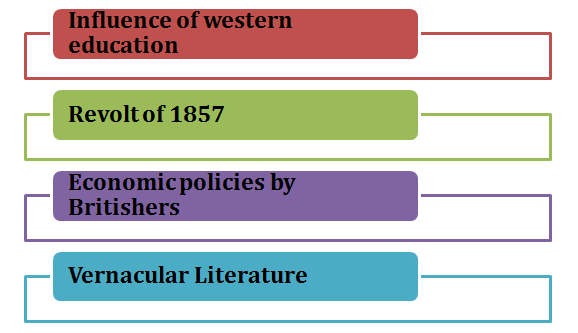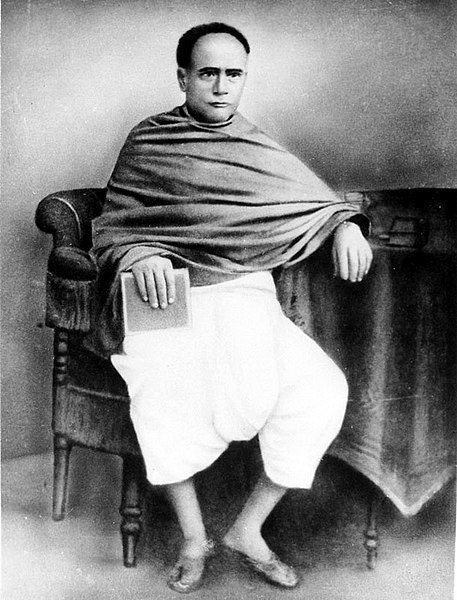

The tradition of Indian identity was about the ancient culture that was exploited by the British colonial culture. Two hundred years of British Raaj ended in 1947 due to the rise of the Indian national movement to get independence. Different battles were fought against the Britisher and there were enormous stories of freedom fighters who sacrificed their own lives to make India free.
Political unity occurred in Indian history since the ruling period of great emperors like Akbar, Shivaji, and Asoka. The cultural unity of Indians was noticed due to the subcontinent as India sought one entity for a longer duration. The formation of the Indian National Congress was one of the greatest influences on the Indian movement against the British rulers.

Factors that influenced National Movement of India
The introduction of English education was done by the administration of Britishers in 1835 and it was conveyed as the climacteric moment to influence the Indian movement. Western education was introduced in India with the primary goal to educate Indian citizens (Graff, Kapur Walters, 2019). The moment Indians were introduced to democracy, liberty, equality, and other European radical concepts, the strategy backfired against the British administration.
Those who had pursued western education like Raja Rammohan Roy, Dadabhai Naoroji, Subhash Chandra Roy, Surendranath Banerjee, and others who fought for equality and liberty in India influenced the patriotism of India.
Raja Ram Mohan Roy led the reformed socio-religious movements in the 19th century. The primary aims of these movements were to remove the societal evils and superstition from India. It helped spread unity, patriotism, and women's empowerment and education in India. Ishwar Chandra Vidyasagar was one of the promoters of the socio-religious movements in India that assisted the rise of the Indian national movement.

Ishwar Chandra Vidyasagar
Unknown artistUnknown artistUnknown authorUnknown author, Public domain, via Wikimedia Commons
Vernacular literature referred to different poems and plays conducted by Indians to influence patriotism, bring unity, and introduced liberty. These were insulting to the Britishers as Indians were influenced by the anti-British emotions. The greatest Indian poet started to write stories, plays, and poems with pseudonyms. Nil Darpan was one of the greatest plays that arise the Britishers tortured the farmers to force the indigo plantation.
The British administration in India introduced the communication network system with railways, roads, postal services, and others. These movements helped India to increase the national movement across pan India. The communication network accelerated the national movement led by influencers from different zones as it bridged the gap in Indian unity.
The administration of the Britishers consolidated the thought procedure of Indians about independence. The mass movement by the leaders enhanced consciousness and awareness regarding the Independent India. The Swadeshi Movement in Bengal and the formation of the Indian National Congress influenced the political context of getting freedom from the Britishers.
Indians instilled the revolt of 1857 and it was considered the first movement for nationalism. The influence of heroic roles played by Nana Saheb, Rani Laxmi Bai, and Tayta Tope made Indians influenced to join the freedom movements. It was considered the first movement against the Britishers conducted by civilian rebellions. The British East India Company’s army joined the movement against the British colonial strategy intending to free India from the British Raaj. Indian Press was even restricted by Britishers.
The Ilbert Bill was introduced in 1833 to give Indian judges the power of hearing the cases that were against Europeans. Viceroy Lord Ripon passed the bill towards the legal advisor for the Indian Council (Varadharajan, Irigaray & Conrad, 2019). The authority provided to Indian judges made the British exposed to the racial prejudice that Indians had against the Britishers.
The Britishers were busy to make economic exploitation of the Indian treasure and wealth draining Britain. They also exported the raw materials from India. Additionally, these behaviours conducted by the administration of British ruined the India's manufacturers, handicrafts, and financial strengths. This led to boycotting the foreign materials in India and led to rising the Indian National Movement. Some western educated influencers gradually join the Indian national movement and make the socio-political factor.
Various factors are accountable for the reason behind the rise of the Indian National movement since the Revolt of 1857. Additionally, different other factors made the Indians inspired to join the movement to make India free from the colonial culture of India. Meetings, procession, mobilisation, and boycotting foreign goods were strengthening the Indian movement.
Q.1. What was the first movement conducted by Indians to seek freedom?
Ans. The revolt of 1857 is still considered the beginning of the Indian struggle to get rid of the British colonial strategy in India. It is also comprehended as the Indian’s First War of Independence. The revolt was conducted due to the sentiments of the Hindu and Muslim army of the British East India Company as they believed that the cartridge was made with either cow or pig fat. They started reluctantly to utilise the Enfield rifle. It led to the revolt of 1857 in India.
Q.2. Why British administration was accounted for the failed economic policy?
Ans. The leaders of the administration of the British were busy exploiting Indian treasures and raw materials for their profit. They could not account for the reason behind poverty in India that conducted deaths in mass.
Q.3. How the modern press in India contributed to the National Movement?
Ans. The period of British rule was considered as the rise of the press in India in different regional languages. This press was reliable to spread the news of the Britisher's torture in different places of India and influenced the freedom fighters.